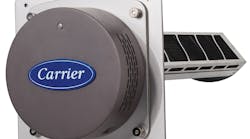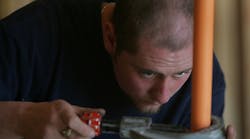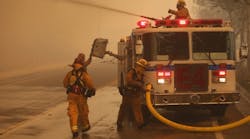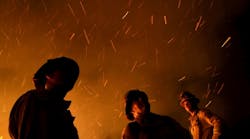There are many moving pieces in the installation of fire pumps and their related components. On Consulting-Specifying Engineer, Milosh Puchovsky, of the Worcester Polytechnic Institute, broke down how the NFPA 20: Standard for the Installation of Stationary Pumps for Fire Protection should be properly applied to buildings.
In the first section of the write up, Puchovsky talks about the importance of suction piping.
It comprises all piping, valves, and fittings that feed water to the pump's suction flange. The selection and installation of such suction pipe material is addressed by NFPA 24, which specifies the use of certain types of iron, steel, concrete, plastic, and copper. In addition, NFPA 24 addresses how the pipe and fittings are to be joined together, depth of cover if the pipe is buried,protection of the pipe from freezing and other damaging events, joint restraint, and acceptance testing including flushing and hydrostatic tests.
NFPA 20 addresses the arrangement of the suction pipe and associated devices. Generally, the suction pipe and associated devices need to be arranged in such a manner so as to minimize the likelihood of turbulent and imbalanced water flow entering the pump. Such conditions decrease overall pump performance, can result in a sudden system failure and can cause premature wear of system components.
Visit Consulting-Specifying Engineer to read the rest of the in-depth write up on fire pump systems by Puchovsky.












